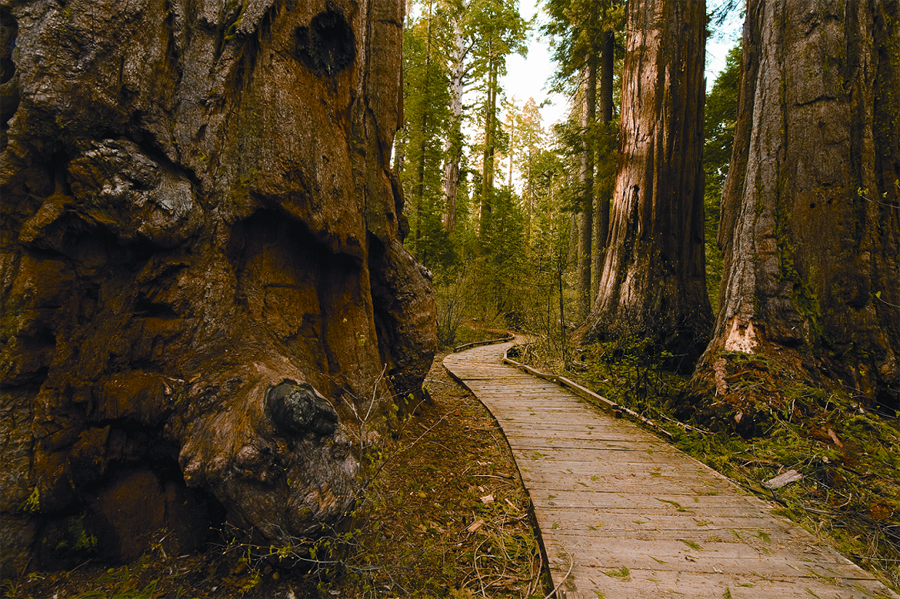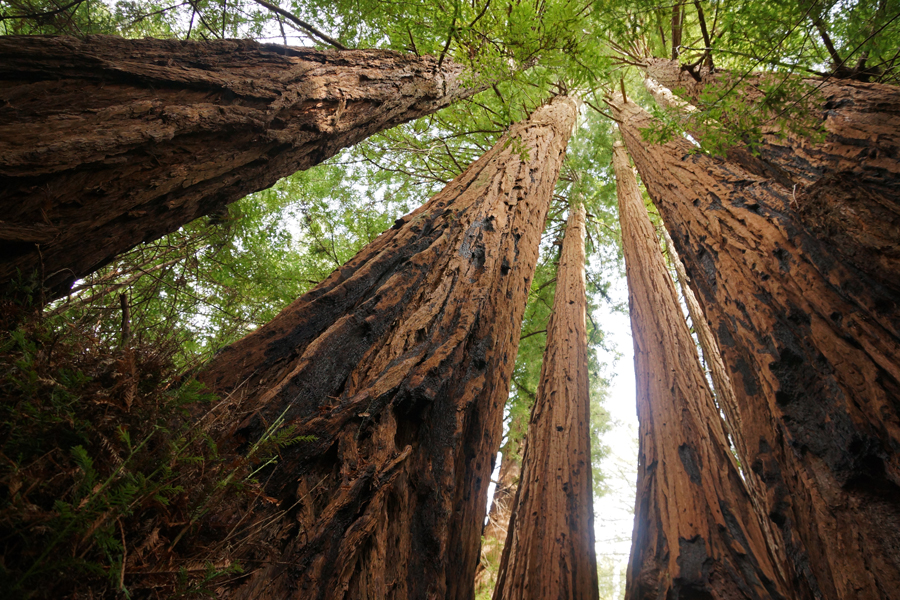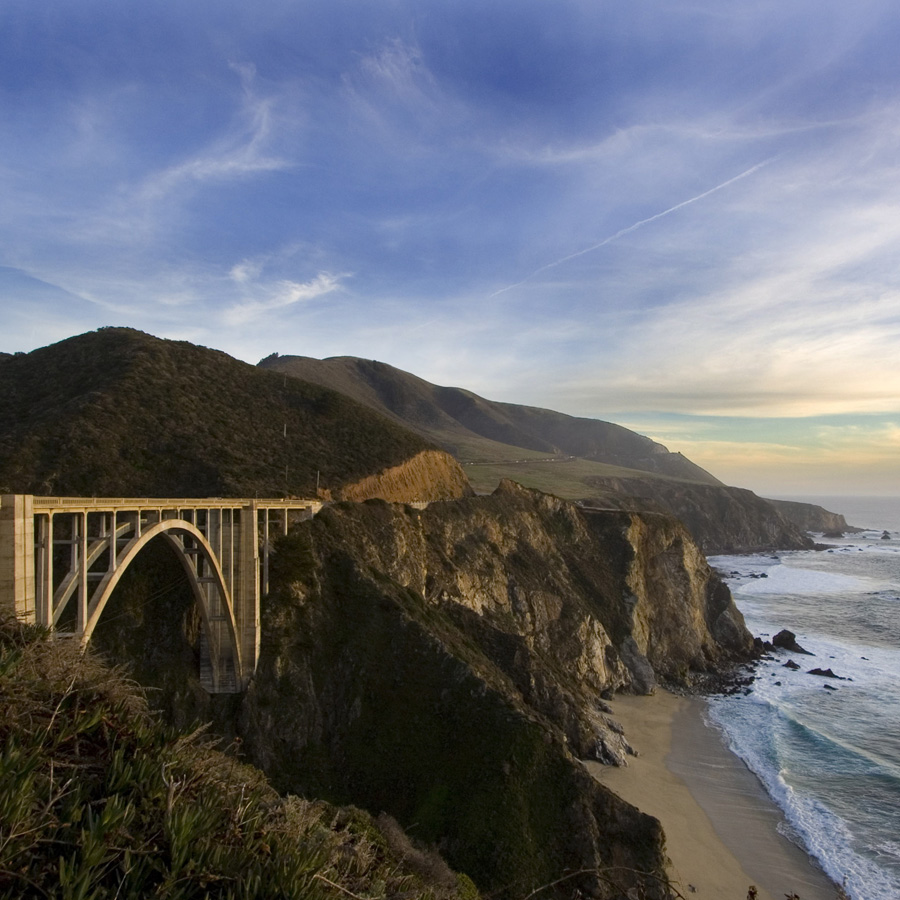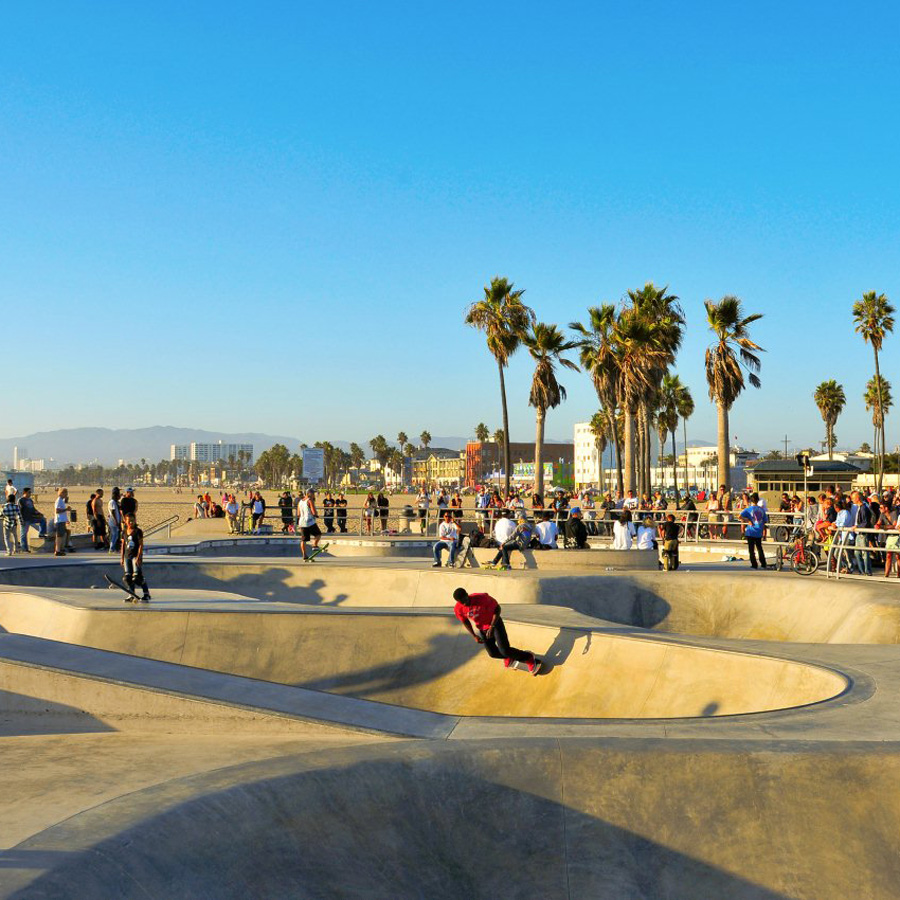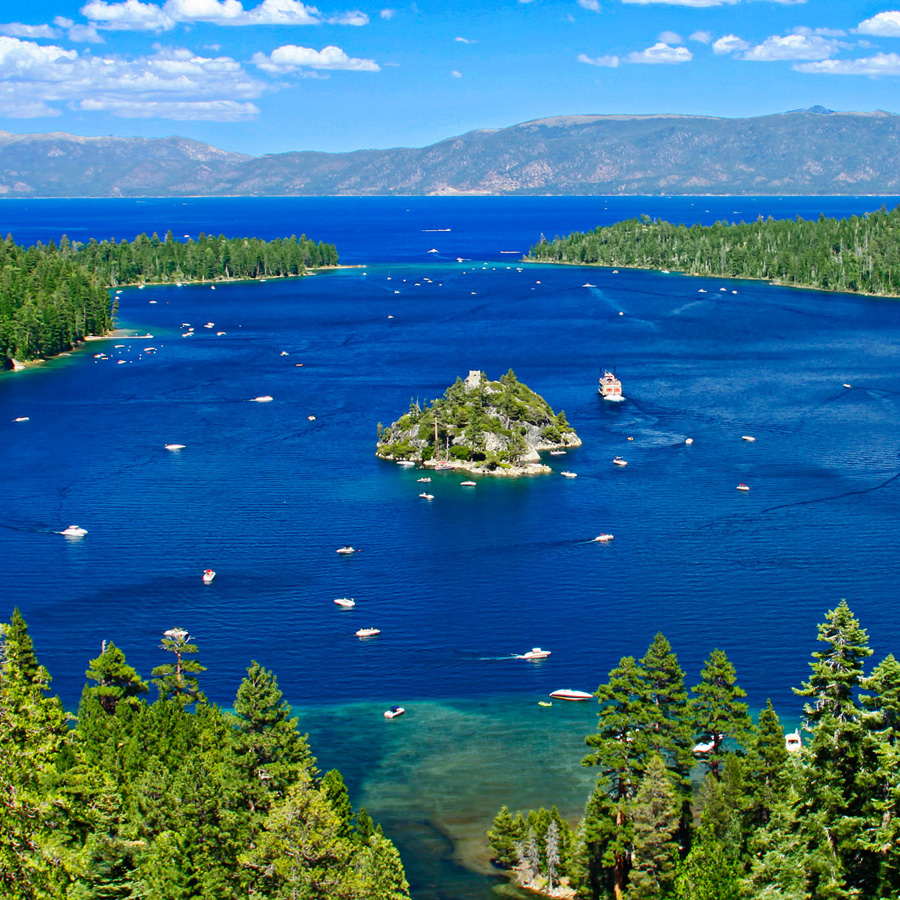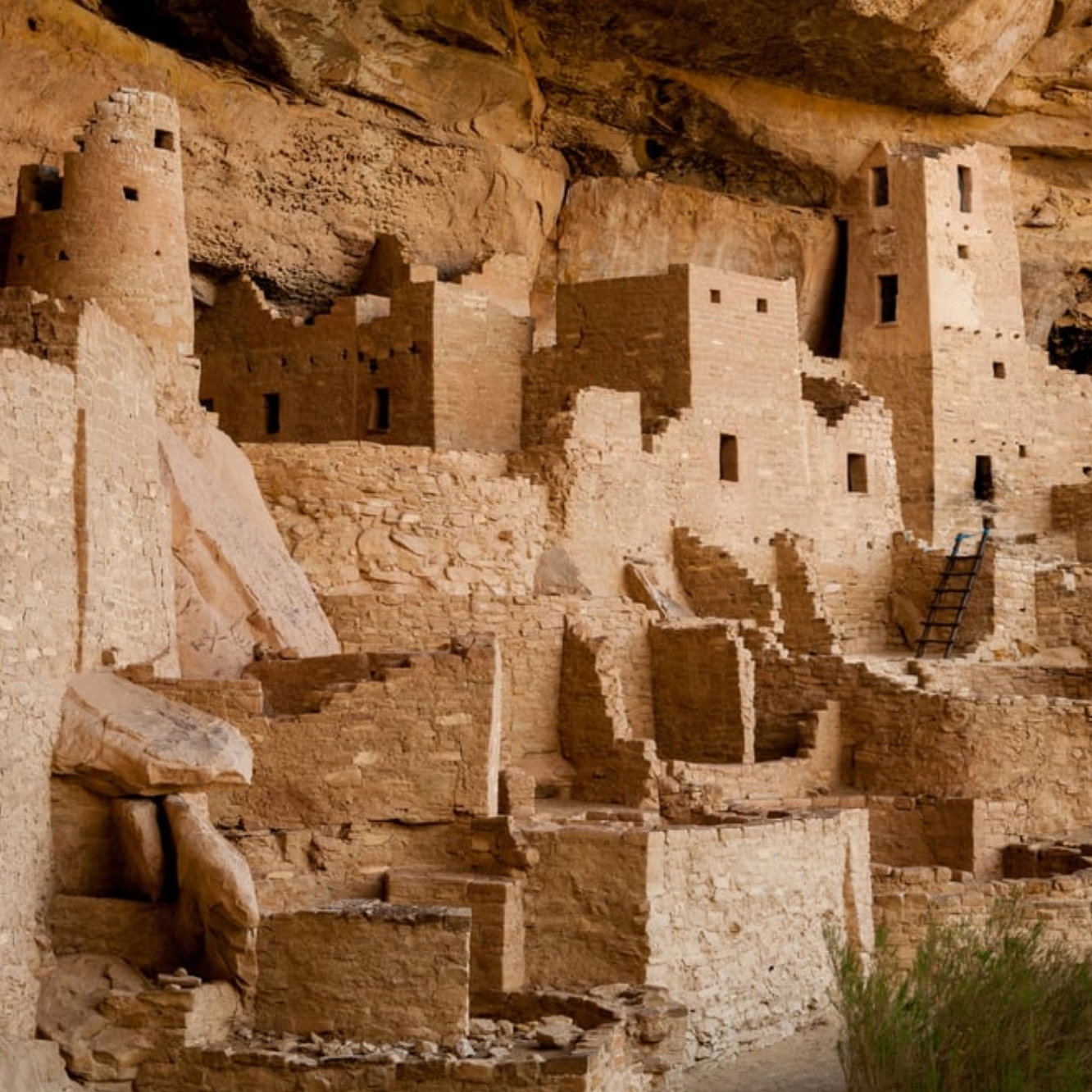Yosemite and the Gold Country
This tour brings together three unique experiences: the urban sophistication of San Francisco, the dramatic natural beauty of Yosemite and the Sierra Nevada, and the vibrant history of the Gold Country.
Following a few days surrounded by the serene beauty of the City-by-the-Bay, a drive east and past the Central Valley leads to a dramatic change of scenery. At the foothills of the Sierra Nevada, the adventurous traveler enters a world of tall mountains, deep rivers, lush redwood forests and small rural communities where gold panning is still an honorable weekend occupation. This is the Gold Country and the getaway to one of the most iconic places on earth, Yosemite National Park. From the tiny gold-rush era towns of Sonora to the timeless granite majesty of Half Dome and El Capitan, this is a journey through history and awe-inspiring natural wonders.
From visiting iconic sites such as Mono Lake, Yosemite Falls, Half Dome and El Capitan, to reliving the history of the fever that drove people to the Gold Country around Sonora and the silver mines near the ghost town of Bodie, this is a trip that the seasoned outdoor traveler and the casual adventurer will enjoy equally.
The suggested basic itinerary takes on the best of San Francisco and fuses it with a multi-day exploration into the vast beauty of the Sierra Nevada. But this is indeed only a suggestion. All year round, a multitude of seasonal activities and day-trips can make your visit ever more special. Let us tailor your travel time to your own tastes and interests.
Length of trip
10-12 days, easily extended to 14 days or more
Start-end points
San Francisco
Best time to travel
All year-long, with winter snow in the Sierra and Yosemite
Character
Adventurous
Urban, rural and nature
History and culture
Intensity level
Easy and relaxed in San Francisco
Moderate in the Sierra and Yosemite
Suitable for
Independent or assisted travel
Couples, families and small groups
Highlights
- Immerse yourself in the diversity and vibrancy of San Francisco’s neighborhoods
- Experience the sights and sounds of Chinatown’s secret alleys and Fisherman's Wharf marina
- Explore the iconic landmarks of Coit Tower, Lombard Street and Golden Gate Bridge
- Embark on a ferryboat adventure for a visit of the island and prison of Alcatraz
- Enjoy San Francisco’s multitude of beautiful museums and art galleries
- Explore San Francisco’s neighborhood in a go-car
- Cruise the Bay and under the Golden Gate in the Bay Voyager
- Enjoy a last drink at Heinhold’s Last Chance Saloon in Oakland
- Try your hand at gold panning in Sonora
- Immerse yourself in the gold fever of Columbia circa 1860
- Enjoy a night stroll and live music in Jamestown
- Taste the unique varietals of mountain wineries in Murphys
- Stroll among the giant sequoias in Calaveras forest
- Go back in time in the ghost town of Bodie
- Discover the unique tufa formation in and around Mono Lake
- Dine and befriend a ghost at the saloon of the historic Bridgeport Inn
- Take in the magnificent views from Yosemite’s Glacier Point
- Hike to the Yosemite waterfalls and Mirror Lake
- Observe the changing light at sunset on the face of Half-Dome
- Stand across the meadow in front of El Capitan’s sheer granite cliff
- Enjoy an afternoon drink in grand style at the Ahwahnee Lodge
- Stock up on authentic western fashion in Gold Country’s Mariposa and Angel Camps
Suggested itinerary at a glance
Day 1-2 • The neighborhoods of San Francisco
Start your adventure with an exploration of one of the most beautiful, interesting and diverse places in the world. In spite of its reputation for hilly terrain, many of San Francisco neighborhoods are actually very accessible and easy to explore on foot.
Discover the hidden history of Fisherman’s Wharf and immerse yourself in the Bohemian culture of North Beach. Stroll along the Marina along the Bay of San Francisco to Fort Point underneath the awe-inspiring Golden Gate Bridge. If you are in an adventurous mood, walk across the Bridge to the Marin Headland side of the Golden Gate for breathtaking views of the North Bay on one side and the Pacific Ocean on the other.
Take a leisurely walk through the hidden alleys of Chinatown to learn about the past and current history of the” Benevolent Associations”, the Tongs and the Gangs. Immerse yourself in the sounds, smells and culture of this neighborhood where ancient history and modern politics intertwine.
Day 3-4 • The Mission District, Nob Hill, Golden Gate Park, Alcatraz
One of the oldest neighborhoods of the City, the Mission District has its origins in the Mission Dolores, established by the Spanish in 1776. Today, it is not only the center of the Chicano and Latino culture, it is also one of the liveliest and hippest neighborhoods of the City. Art galleries and music venues abound, alongside restaurants serving foods from around the globe.
Once a deserted hill in the middle of an expanding city, Nob Hill caught the eye of the five railroad barons. Learn about Nob Hill’s colorful history and feuds, how an earthquake and a fire wiped it out, and how it resurrected itself to become a grand setting for a cathedral and a Hitchcock movie.
For a stroll in a flatter part of San Francisco, take an exploration of Golden Gate Park, where beautiful green open spaces are the background to the renowned Academy of Sciences, the De Young Museum, the Conservatory of Flowers and the Japanese Tea Garden.
There is so much to see and to do in San Francisco, but a visit of the City-by-the-Bay will not be complete without a ferry-boat across the Bay for a visit of the Island prison of Alcatraz. For an unforgettable experience, if time permits, time the schedule of your ferry ride with the sunset hour. This is when the Golden Gate Bridge turns even more red and the building of the city shimmer in the glowing light.
Day 5 • San Francisco Day of Adventure
Today is your opportunity to explore the City at a different pace and from a different viewpoint: on the road or on the water.
On the road: Riding in a GoCar, an open two-seaters that is easy and fun to drive, you start the journey from Fisherman’s Wharf and continue to the Marina District, Crissy Fields, below and above the Golden Gate Bridge, along the ocean to Golden Gate Park and the Presidio. Of course, the tour is not complete without zigzagging down the crooked Lombard Street. This ian experience guaranteed to put a smile on your face.
On the water: Ride the open-deck Bay Voyager, a powerful 300 HP, 24 feet vessel under the expert navigation of Captain Charles. The scion of a long line of marine officers, Captain Charles shares his intimate knowledge of the Bay and its history while riding the swell. From secret alcoves around Treasure Island, to circling Alcatraz and zipping under the Golden Gate Bridge, this is an unforgettable experience.
And for a perfect ending to your journey, take an evening ferry to Oakland’s famed Jack London Square district to visit a place where history, culture and food mingle for a unique experience. From tiny saloons favored by the local firemen, to upscale hipster eateries serving fusion cuisine, there is something for every taste and budget. A drink at Heinhold’s First and Last Chance Saloon is an absolute must. One the oldest bars on the West Coast, it was Jack London’s favorite dive and where he wrote many of his adventure novels.
Day 6-7 • Gold Country: Sonora, Columbia, Jamestown
The discovery of gold in 1848 sparked the largest mass migration to California in U.S. history. Practically overnight, more than 300,000 prospectors from around the world arrived and headed east to the forbidding landscapes of the Sierra Nevada. Retrace their journey to the Gold Country where the past and the present merge into one unforgettable destination.
Explore Old West historic towns, try your hand at gold panning, enjoy outstanding wineries, farm-to-table restaurants and inviting shops.
Following stops in the tiny communities of Angels Camp and Murphys, you arrive in the heart of the “Mother Lode” region and start your visit of the Gold Country in the town of Sonora. Its main street has not changed much since the heyday of the “rush”. Its restaurants and stores still cater mainly to the local population. But it is at night that the town truly comes alive with its multitude of bars and saloons, where live country music can be heard all year round.
A short drive away lies the small town of Columbia. At the height of the Gold Rush, it became the second largest city in California. Unlike most mining towns that flourished in the era then died, Columbia has been preserved exactly the way in was in the year 1860. It is a unique and fantastic place to experience the life and culture at the time of the “gold fever”. Walk the town’s main street, visit the newspaper print shop, get some cash from the bank, spend it unwisely at one of the saloons. You can even take a ride on the local coach, purchase gold mining equipment and attend a show at the local theater.
A walk down Main Street in Historic Jamestown is a step back in time. In the company of a local gold miner, learn the art of gold-panning by the riverside at an old mining site. Visit Railtown 1897 State Historic Park, where the undisputed star of the park is Sierra No. 3, a circa 1891 steam locomotive that made appearances in Back to the Future Part III and High Noon, among other films. On weekends, April through October, visitors can ride behind an “iron horse” for a 45-minute trip through the scenic hills of California’s Mother Lode country.
Day 8-9 • Sierra Nevada: Giant Sequoias, Bodie and Mono Lake
The giant sequoias of Calaveras Big Trees State Park were only discovered in 1852 by a hunter who was tracking a bear through the forest of the Sierra Nevada. Stroll along the well-maintained path amongst these massive majestic trees. Home to some of the tallest (100 meters high) and oldest giant sequoias anywhere in the world, this forest is one of the most magnificent groves on the entire West Coast.
From the west to the Eastern Sierra Nevada, drive over Monitor Pass. It known for its spectacular scenery of alpine forest and lakes. You can also enjoy great food and the natural hot springs in the welcoming tiny town of Markleeville.
Historic Bridgeport is a great location as a base of exploration of the north part of the Eastern Sierra. Surrounded by wild and and beautiful scenery year-round, this tiny community boasts a couple of excellent restaurants serving local game meats in season and a historic hotel with a friendly ghost.
Spread across the landscape of a high, remote valley is a veritable ghost town - the historic gold-mining town of Bodie. Once bustling with general stores, saloons and dance halls, Bodie attracted gold diggers from the whole region, who would come to drink, relax and gamble their finds. One of the largest and best preserved ghost towns in the American West, some portions of the site are accessible to people in wheelchairs and others require the assistance of a companion, but this place is not to be missed.
One of the oldest lakes in the western hemisphere, Mono Lake, is hauntingly beautiful, reflecting the snow-capped Sierra Nevada in its shimmering blue waters. Its mineral formations, the “tufas”, resemble phantasmagoric columns and creatures. An accessible path leads you on a beautiful walk around the Lake.
Day 10-11 • Tioga Pass, Yosemite Valley, Mariposa
Rolling through the thick forests from Big Oak and Crane Flats, Tioga Pass rises high into the rugged Sierra Nevada high country. Just about every bend in the road reveals another awesome and breathtaking view along the way to the Yosemite Valley. This is the gateway to Yosemite.
Yosemite is America’s first National Park. Established in 1890, almost 95 percent of this vast park (roughly the size of Rhode Island) is still today classified as wilderness. But there is so much to see and enjoy in the accessible parts. The Valley, a 7-mile wide canyon, is home to some of the most iconic sites in the world: El Capitan, the world's tallest granite monolith and one of the world's top rock climbing destinations; Yosemite Falls, the largest waterfall in North America; and of course the spectacular Half-Dome, Mirror Lake and giant, 3,000 years old Sequoia trees.
Take a hike along the accessible and well-maintained path to Glacier Point. You will be rewarded by awe-inspiring views of Yosemite and, after the descent back to the valley floor, will have the perfect excuse to pamper yourself with an afternoon drink or evening dinner. The Ahwahnee Hotel, an historic grand stone-and-timber lodge, is a unique setting to end your day in Yosemite in style.
Just outside of the entrance to the park, visit the small town of Mariposa, once a center of supplies and entertainment for the miners that came from all over the world in the 1850’s to dig for gold and silver in the “mother lode” of California. Go shopping at one of the very best Western stores where one can still buy hand-crafted picks and shovels, as well as blue jeans and cowboy boots.
If you have another few days
The Eastern Sierra Nevada is a destination in itself for exploring wild landscape and unique history.
Mammoth Lakes • At above 11,000 feet, this is California’s highest four-seasons resort and playground. With 300 days of sunshine annually, the area offers infinite opportunities for recreation. The legendary snowfall makes it a perfect winter playground, while in the spring and summer, its miles of trails, lakes and hot springs attract nature lovers from all over the state.
Bishop • The landscape around the town of Bishop changes quickly from the high desert sage and arid climate of the wide open Owens Valley floor to an alpine wonderland of pine forests, rushing streams and gorgeous deep-blue lakes surrounded by the mighty mountain peaks of the Eastern Sierra. Bishop is also home to the Laws Railway Museum, a wonderful place absorb the atmosphere of the Old West and learn about the history of the region. Only a short drive north of the city, you can explore one of the largest concentrations of ancient Indian petroglyphs carved on the granite walls on an hidden canyon.
Hot Springs • The Owens Valley stretches from north to south along the foot of the Eastern Sierra Nevada. Hot waters gush to the surface in abnormally high concentration between the towns of Bridgeport and Mammoth Lakes, 60 miles south. Many resorts offer easy access to well-maintained pools. But the real pleasure is to find and enjoy the hidden spots open to all in their natural settings.
Manzanar • In 1942, the United States government ordered more than 110,000 men, women, and children of Japanese ancestry to leave their homes, to be detained in remote, military-style camps. The Manzanar War Relocation Center was one of ten camps where Japanese-American citizens were detained during the war. This beautiful and moving place is today a National Historic Site. Its wide open space, preserved barracks and fascinating museum should be on the must-see list of anyone interested by the history of the US.
Lone Pine • At the very southern end of the Owens Valley, just before the Eastern Sierra Nevada gives way to the desert, lies the small town of Lone Pine. In spite of its minuscule size, this community should be on your list of must-do visits. Strategically located, it forms one half of the gateway to Death Valley on the east, with the Alabama Hills on the west. Countless Hollywood western movies have been shot here. Its Film History Museum is a must for any movie buff. A short drive north of town is the welcoming Paiute-Shoshone Indian reservation where you can dine on traditional bison meat.

























